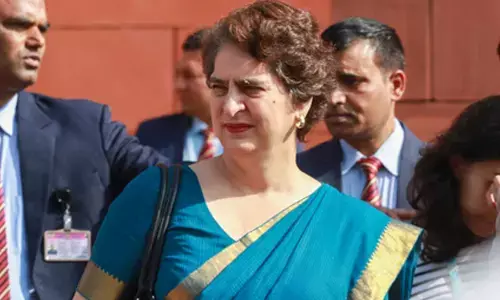Eway bill generation is just a three step process : have we really understood this in good sense

To speak it outright, GST Eway bill is really an three step process that is not understood by majority of people who tries to understand the mechanism behind the Eway bill.
To speak it outright, GST Eway bill is really an three step process that is not understood by majority of people who tries to understand the mechanism behind the Eway bill. Before discussing or moving further with the topic let us first try and understand the basics evolving around Ewaybill mechanism to understand the process of generation of eway bill and to understand the stake of each parties involved in an eway bill transaction.
So What is an Eway bill and when it should be generated : Gst E waybill means an electronic way bill which is meant for movement of goods. The E-way bill has to be generated on the GST Network. A 'movement' of goods of more than Rs 50,000 in value cannot be made by a registered person without an e-way bill. Generating the e-way bill, the parties to a supply (viz, Supplier, recipient, and the transporter will be allotted a unique eway bill number (EBN) without which movement of goods cannot be carried out in the GST regime. Earlier also in previous taxation laws we had something related to e way bill now but it was a nightmare for suppliers then because movement of goods couldn't take place without obtaining these 'waybills' from VAT authorities. Back then under previous taxation laws, waybill were considered as physical document that allowed movement of goods. But the compliance around waybills caused restricted movement of goods across states. But Post GST these way bills have been replaced with e-way bills which aims at mitigating the problems caused by waybill compliances.
And when should an e-way bill be generated? Well from the reading of the above one can tell that an e-way bill will be generated when there is movement of goods –
- In relation to a 'supply'
- For reasons other than a 'supply' ( say sales return, purchase return)
- Due to inward 'supply' from an unregistered person.
What are the objectives of Eway bill system :
- One e-waybill for movement of the goods throughout the country
- Hassle free movement of goods for transporters throughout the country
- Abolition of transit pass system of erstwhile state tax laws
- Easier verification of the e-waybill by officers with complete details
With this understanding let us move towards our discussion of three step process involved in Eway bill generation but before that let me introduce you with the stakeholders that an eway bill interacts while generation of eway bills. The eway bill has four stakeholders who would interact with it on daily basis.
| SUPPLIER | TRANSPORTER |
| OFFICER | RECIPIENT |
Stakes of the above mentioned Stakeholders in detail for you :
- Stakeholder Eway bill – Supplier : A supplier holds a majority share in the e way bill generation process as he is the person who initiates the movement of goods from his place of business to recipients door. It's the responsibility of the supply to fill the Part A of EWB-01 (Eway bill Generation Form) which contains details about his client/recipients GSTIN, the product/goods sold and intended for movement, HSN Code, Units that are sold with Unique Quantity Code, and taxable value and GST tax rate classification. These details provided by a supplier in his eway bill Form also forms part of his GST Return GSTR-1 on GSTN network. Meaning the details filed up in Form EWB-01 would be auto transported to Suppliers GSTR-1 return from E Way bill portal and thereby saving efforts for a supplier in preparing GSTR 1 return which will be auto filed once the eway bill Form for each outward supply is filed at the eway bill portal. So from this we can stake of the supplier in Ewaybill is much higher than the other stakeholders in this Ewaybill generation process.
It's to be understood first that the part A of E-Way bill Form filed by the supplier does not mandate movement of goods then how e way bill completes the process of movement of goods. Here lies our question and the answer for three step process that is involved in E Way bill generation. But for that we have to first learn about our next stakeholder who is also equally important as supplier in the process of E Way Bill generation
- Stakeholder E Way bill – Transporter : Transporter is one who connects the movement of goods between supplier and recipient. He provides a conveyance in which the goods of the supplier are carried to recipients place. Earlier in old taxation law we had something referred to as Form JJ for movement of goods between the state. But it was a lengthy process which involved paper, time and efforts of both supplier and transporter and further the documents were often required to be showed off at the check posts to the inspectors in charge. The goods were often delivered lately due to inspection at the check posts. But Eway bill strikes out all these flaws from the erstwhile taxation laws and provide us with an quicker movement of goods with no check posts and no inspections. So when these check-posts are being removed, the government in its e way bill instilled the mechanism process of erstwhile while taxation laws into one Form which carries all the details just we had in erstwhile taxation laws. In Ewaybill we learnt that it is an interlinked process with one detail being supported by another. Here's where the stakes of Transporter comes in where he is required to fill Part B Of Eway bill Form which would contain details such as Transporters ID/GSTIN No.; details of conveyance such as vehicle number and the Approx. distance of travel. It's only then, the goods gets the status of eligibility for movement when the transporter or the supplier on his behalf fills up the second part of the Ewaybill Form. So here the second step process in this chain is held by the transporter and that's why he is also an important stakeholder in generation of E Way Bill.
- Stakeholder Ewaybill – Officer : As cleared out early, the inspector Raj under GST is totally removed and the officers under Ewaybill mechanism would only enter the scenario in cases of cancellation of eway bill for inspecting the reasons that led behind cancellation of Eway bills. The situation would only arise when an e-way bill has been generated, but goods are either not transported or are not transported as per the details furnished in the e-way bill, leading to cancellation of Eway bill on Eway bill portal by the Commissioner or officer in charge. So only under the above circumstances the officers will have their stakes or say in the eway bill of right to inspect the reason why the goods were not removed as intended or why they were not removed as per the details furnished in the eway bill generated.
- Stakeholder Ewaybill – Recipient : A recipient on the receiving hand has a major responsibility of accepting the goods that are moved on his instructions from supplier's place. Here the recipient has to give his consent to an eway bill generated by the supplier on the common portal by either accepting or rejecting the eway bill by logging into the Eway bill portal. Once the recipient accepts the eway bill his GSTR-2 return is automatically taken care of as his acceptance turns up in GSTR 2 return (a return for recording inward supplies). So the last process is linked by the recipient in this chain, who when one accepts or rejects the eway bill decides the fate for movement of the goods under Ewaybill mechanism.
Stake of Tally.ERP 9 software in generation of E Way bills : Tally is all set to roll out the process of eway bill generation from its gst software. And to start using Tally.ERP 9 to generate e-way Bills, you have just one simple step to start with Go to F11 > F3 > GST Details. And in 'GST Details,'' you can quickly make the following settings -
- Choose the amount limit for transactions above which you can generate e-Way Bills
- Applicable date from when on you can start to generate e-Way Bills
- Inter- or intra-state movements for which you would like to generate e-Way Bills
As per the settings, appropriate transactions will be made eligible for e-Way Bills by Tally.ERP 9. As soon as you finish filling up details in an invoice, based on the criteria settings (as mentioned above), Tally.ERP 9 will open up a sub form in which you can provide additional details of transportation. After this, you can export the data in a JSON file. This JSON file can be uploaded on the e-Way Bill Portal and you can generate WayBill. Along with transportation details, the Bill will also display the e-Way Bill Number (EBN). The EBN can be typed in its corresponding invoice, and you can take a print.
It is this way the Eway bill should be rightly called as interlinked three step process for generation of eway bills. As the details furnished by supplier is then supplemented by the transporter which is then finally accepted by the recipient. This inter linking process ensures that no tax evasions would be made possible in Eway bill structure as the data recorded by each party involved in movement of goods is recorded in the GSTN network and the common portal for generation of eway bills. Thus escaping of information on movement of goods is very remote under this eway bill mechanism.




















